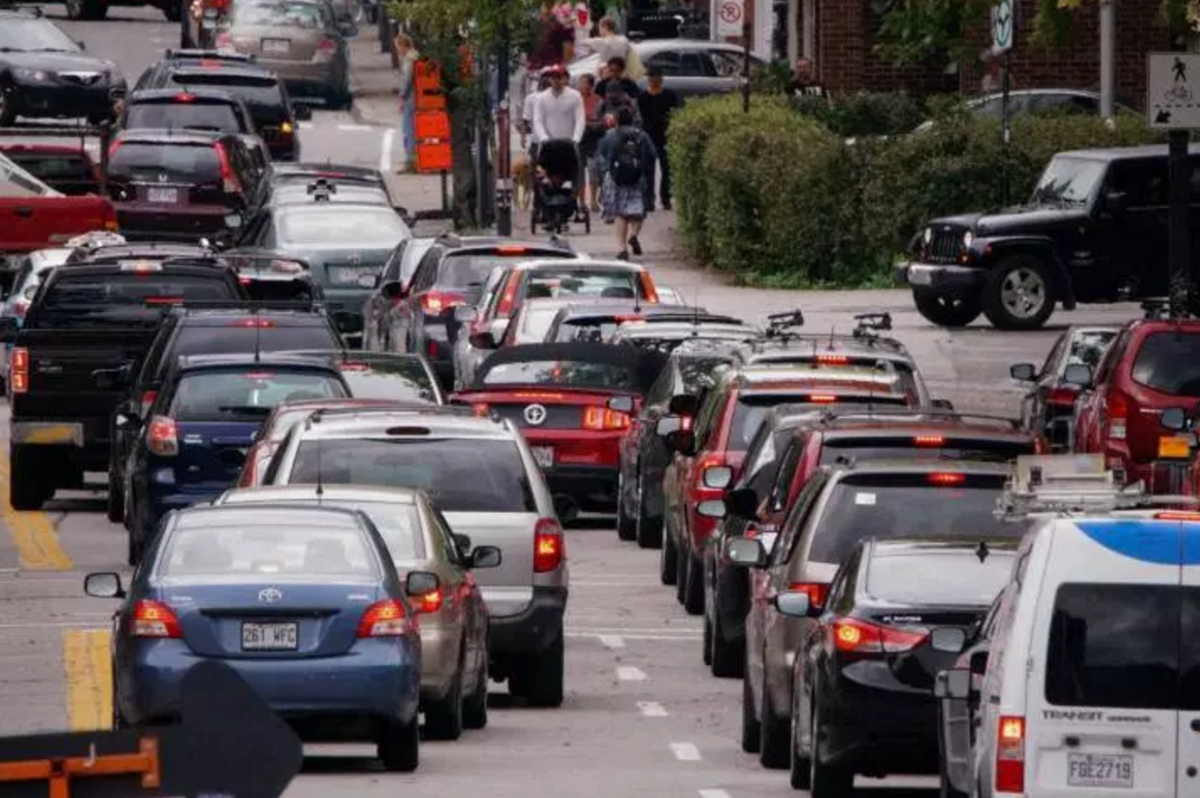Support strong Canadian climate journalism for 2025
Change is sometimes painful, sometimes expensive and often unavoidable. These three characteristics apply to climate change, which is forcing us to rethink our habits.
Indeed, a fully-committed, sweeping behavioural change is needed to mitigate and adapt to climate change, if we are to meet Canada’s 2030 target of reducing greenhouse gas emissions by 219 megatonnes.
As part of its study on transitioning to a lower-carbon economy, the Senate Committee on Energy, the Environment and Natural Resources released its second interim report on various sectors of Canada’s economy responsible for the bulk of Canada’s greenhouse gas emissions. This report focuses on Canada’s transportation sector, which accounted for 23 per cent (or 171 megatonnes) of our annual emissions in 2014. It addresses road transportation, aviation, rail, marine and urban planning.
Changing our transportation habits
Of the five sectors we are studying, it has become clear that transportation is one of the largest contributors to many Canadians' personal carbon footprint. It may be the sector where individuals — not so much government or industry — can have the greatest impact simply by adopting new means of travelling.
There are approximately 24 million registered motor vehicles in Canada, responsible for about 80 per cent of the climate-polluting greenhouse gas emissions from Canada’s transportation sector. Canadian drivers are responsible for those emissions. The bottom line is we need to change our driving, shipping and commuting habits.
Our report highlights opportunities and policy options to reduce transportation-related greenhouse gas emissions — some of which would likely involve considerable public and private funding investments — through new technologies, regulatory measures, targeted climate policies and public transit systems.
However, there are some solutions where average Canadians can achieve tangible greenhouse gas-reducing results. Those solutions include the purchase of lower-emitting passenger vehicles, such as electric vehicles or the use of public transit when available, convenient and affordable. While electric vehicles show much potential, their widespread adoption is far from quick and easy and certainly not inexpensive.

Electric vehicles aren't the only answer
Canada’s electricity generation is nearly 80 per cent clean. Therefore, electric vehicles, powered by clean, non-emitting electricity, are an attractive option when considering ways to reduce greenhouse gas emissions. But one must also keep in mind that manufacturing an electric vehicle, in comparison with your typical conventional car, is more energy-intensive, resulting in greater emissions.
Our committee also recognizes there are many obstacles preventing the popularity of electric vehicles. Chief among those are higher purchase costs, lack of infrastructure and vehicle range anxiety. For example, the purchase cost (with installation) of a fast-charging electric vehicle refuelling station can be as much as $100,000. Further investments, likely from the public purse, would likely be needed to ensure Canada’s current electricity infrastructure can support the additional power demand from electric vehicles.
Some witnesses who appeared before the committee argued incentives are necessary if we want electric vehicles’ market share to expand. Three provincial governments currently offer rebates for purchases of such vehicles — Ontario offers up to $14,000. Whether or not this type of public policy brings good value-for-money remains debatable.
But embracing lower-emitting vehicles, which also includes hydrogen and natural gas vehicles, is not the only answer.

Time to electrify the economy
Many regulatory measures and vehicle technological advances have already helped achieve important reduction gains. Most Canadians probably don’t realize a 2025 model light-duty vehicle is projected to emit 50 per cent fewer tailpipe emissions than a 2008 model. Imagine the emission reduction potential if older models were taken off the road and replaced with newer, cleaner models.
Our committee recognizes there is no silver bullet, but it has become clear that electrifying our economy, including the transportation sector, can play an important role in achieving deep decarbonization. While there is no one-size-fits-all approach to curbing emissions from the transportation sector, there are countless opportunities before us.
While these opportunities come with their share of challenges, namely financial, we believe that a serious, society-wide behavioral shift is necessary if we are to get anywhere close to meeting Canada’s greenhouse gas emission reduction target within the next 13 years.
Ultimately, while governments have policy tools at their disposal, Canadians are in the driver’s seat here and can accelerate at full throttle by changing their transportation-related behaviours, decisions and purchases. Are you up for the (bumpy) ride?
— Richard Neufeld is a senator for British Columbia and Paul J. Massicotte is a senator for Quebec. They are respectively chair and deputy chair of the Senate Committee on Energy, the Environment and Natural Resources.







Comments
Make public transport into and within cities free, the savings in healthcare costs will more than make up for it!
Phase in "Singapore style" tolls within cities, starting in 5 years time gives everyone time for the change. Legislate all taxis to be at least hybrid electric within 5 years.
Not rocket science!
Christian C. Marriott
"Despite improved fuel economy and emissions standards in most vehicles, the growing trend of consumer preference for SUVs and light trucks has resulted in GHG emissions from light trucks more than doubling, from 22 Mt in 1990 to 50 Mt in 2014, which has more than offset reductions in passenger car emissions from 52 Mt in 1990 to 36 Mt in 2014.
Emissions from freight transportation, 68 Mt or 40% of total transportation sector emissions in 2014, have grown significantly since 1990. While emissions from freight aviation, rail, and marine have remained relatively steady over the years at 15 Mt, emissions from freight trucks have more than doubled, from 24 Mt in 1990 to 55 Mt in 2014. Despite generally being the most energy-intensive and highest-cost mode of freight transportation, moving freight by trucks has increased in recent decades as a result of increasing consumer demand for manufactured goods, just-in-time production models, and door-to-door delivery to consumers."
(source: National Energy Board Market Snapshot (2106-07-14): Increased GHG emissions from the transportation sector reflect major consumer and business trends)
The transportation sector represents the second largest GHG emitter after the oil and gas sector, and consumers are responsible for increase in GHG emissions in both sectors. In 2014, passenger transportation accounted for 55% (95 Mt) of total GHG emissions from the transportation sector. More than 60% of vehicles sold in North America last year were light trucks and SUVs. The low price of fuel (and intensive publicity for pickup trucks and big SUVs) is largely responsible for the shift from small less-energy consuming vehicles to larger vehicles. A fast short term solution is to hike the price at the pump; but to be effective it has to be major.